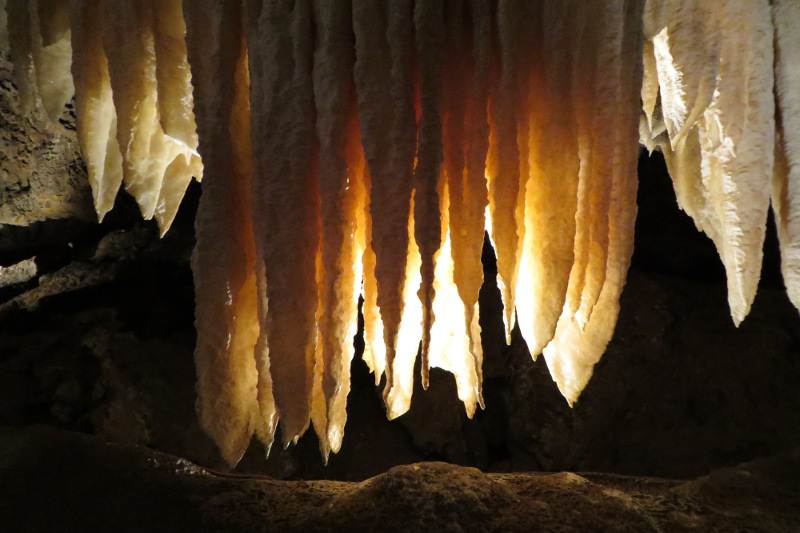There are four Cave & Mine Adventures caves in the Sierra Mountains that are frequented by tourists. The most popular and known is Moaning Cavern Park, which incorporates other activities into their offering like zip-lining, kids climbing walls, birthday parties, and concerts in the cave. To me, this reads: super busy all the time.
The lesser-known caves are the Black Chasm Cavern, the California Cavern, and the Gold Cliff Mine (no longer available). All are equally interesting and have a caving adventure component.
Our intended goal for visiting any one of these caves was spelunking (as part of the outdoor adventures theme) but quickly realized in the investigation phase that La Niña doesn’t meet the requisite 100lbs and no amount of pizza and guacamole covered french fries would help her get to that point in one summer.
So, we opted to meander through the Black Chasm Cavern as a tourist in lieu of dangling from a rope.
This particular cave is full of interesting geological structures that photograph well: stalactites, stalagmites, columns, flowstone, draperies, ribbons, angel’s wings, cave bacon, soda straws, and helictites. Near the entrance is one very large formation that early adventurers liked to chip away at in order to get souvenirs, not realizing that it takes hundreds of thousands of years for each one to form. Luckily, this is the only formation in the cave that sustained damage before people realized that it wasn’t going to grow back in anyone’s lifetime.
Further along the walk, you get a glimpse of a beautiful underwater lake that has swallowed more than its fair share of cameras, flashlights, lens covers, car keys, glasses, etc. that fall from pockets as people lean over to get a better look. People are suitably warned ahead of time… repeatedly… but it still happens.
The most elaborate and beautiful part of the cavern walk is the Landmark Room. At the end of this large chamber is a backlit flowstone under which many have proposed to their future spouse; we opted for a simple photograph. Also found throughout this area are helictites, which are both delicate and extremely rare. The fact that they exist prompted officials to label the cave a National Natural Site (NNS) in 1975 and preserve the contents within.
Interestingly, during the tour, we also learned that it’s safest to be underground during an earthquake. As one lady shouted out: all the delicate formations that took thousands and thousands of years to develop are still intact… so it must be safe to be underground.
